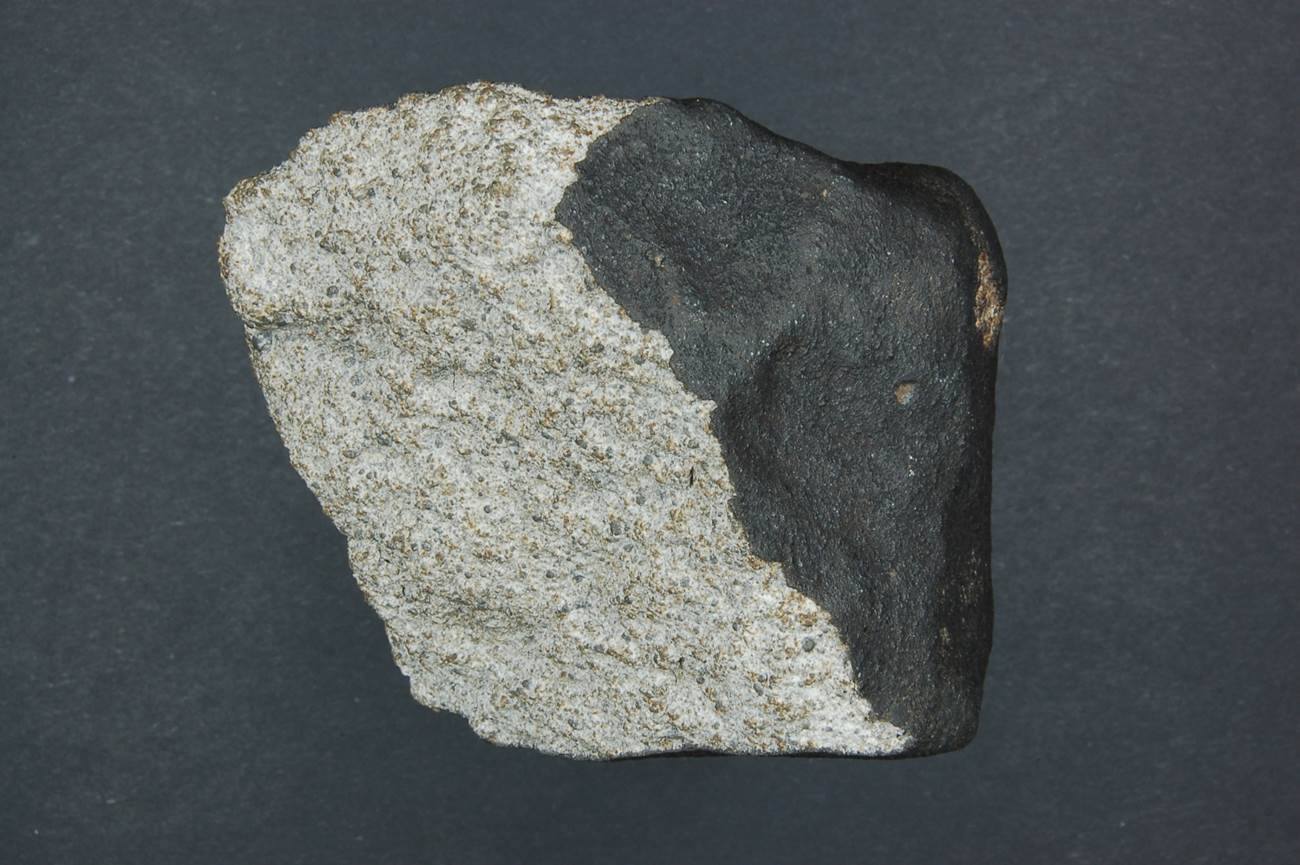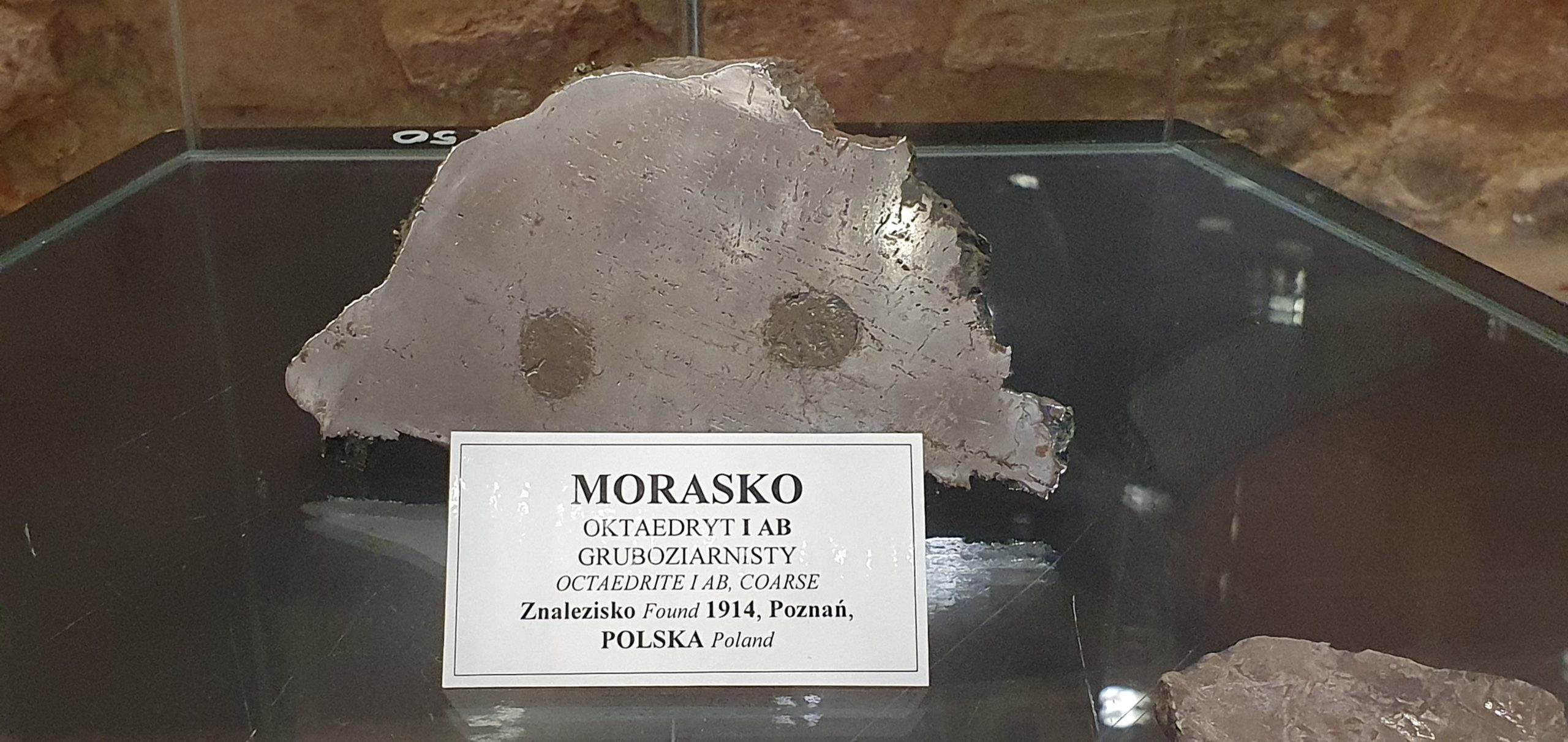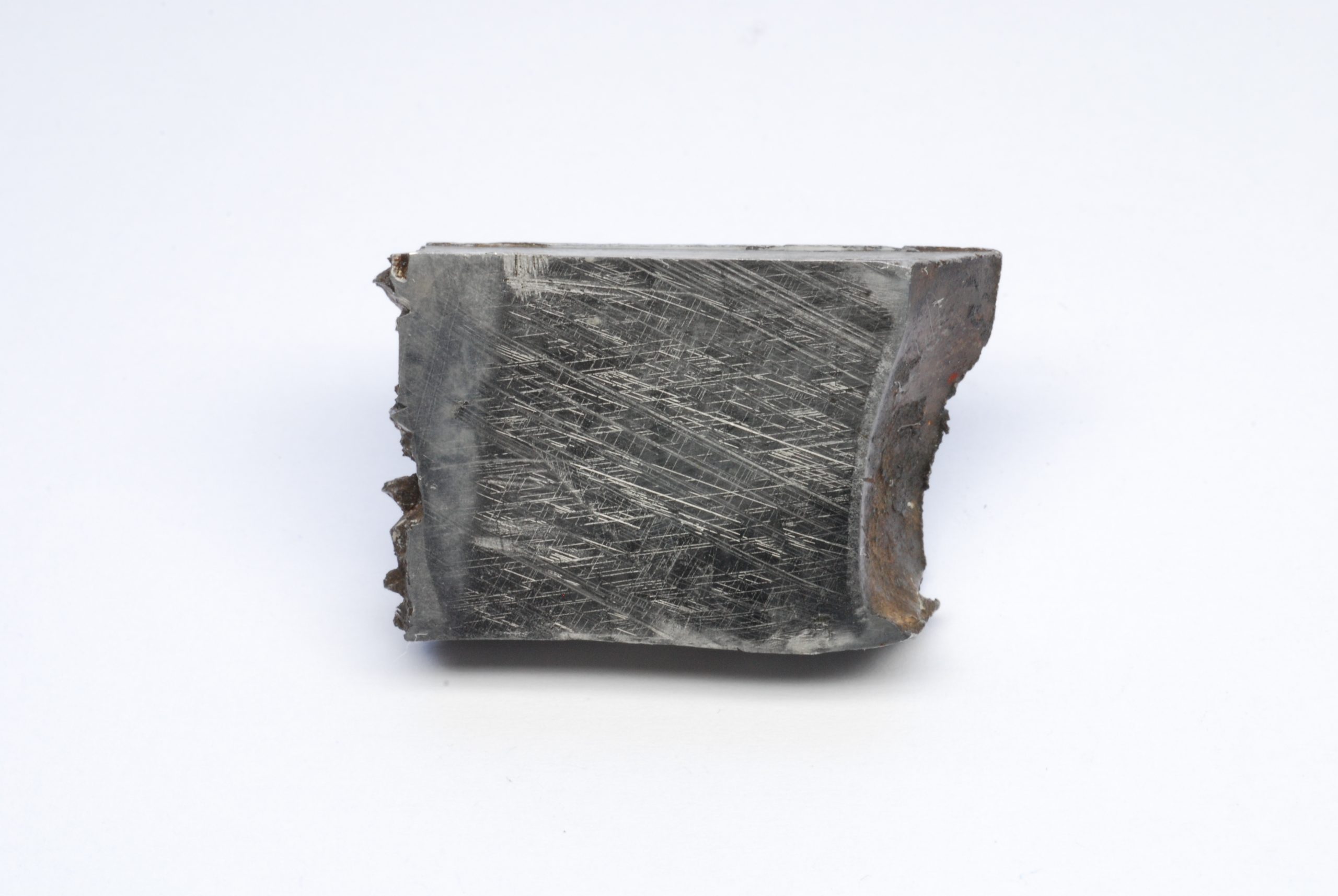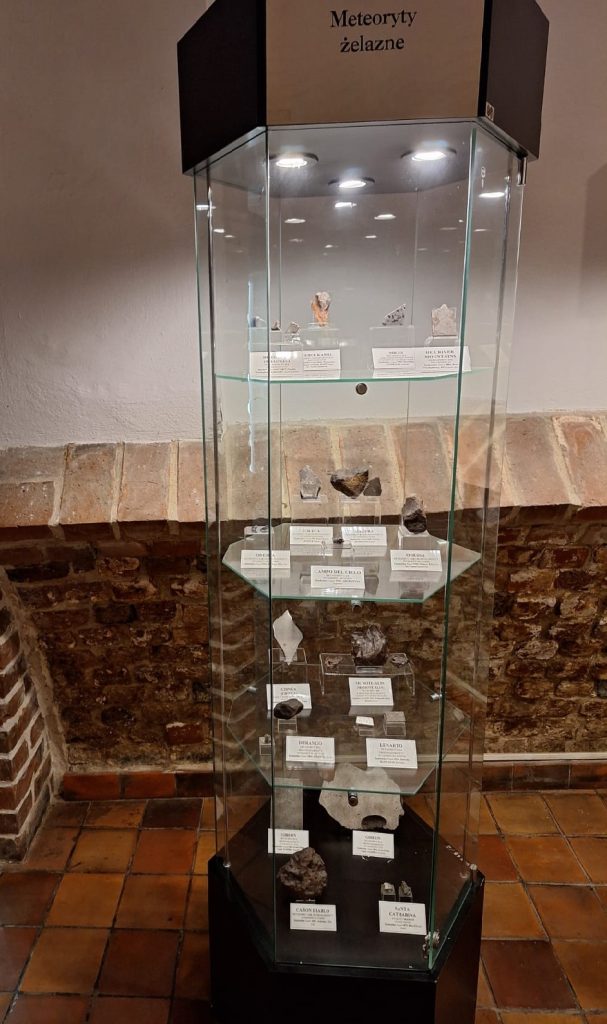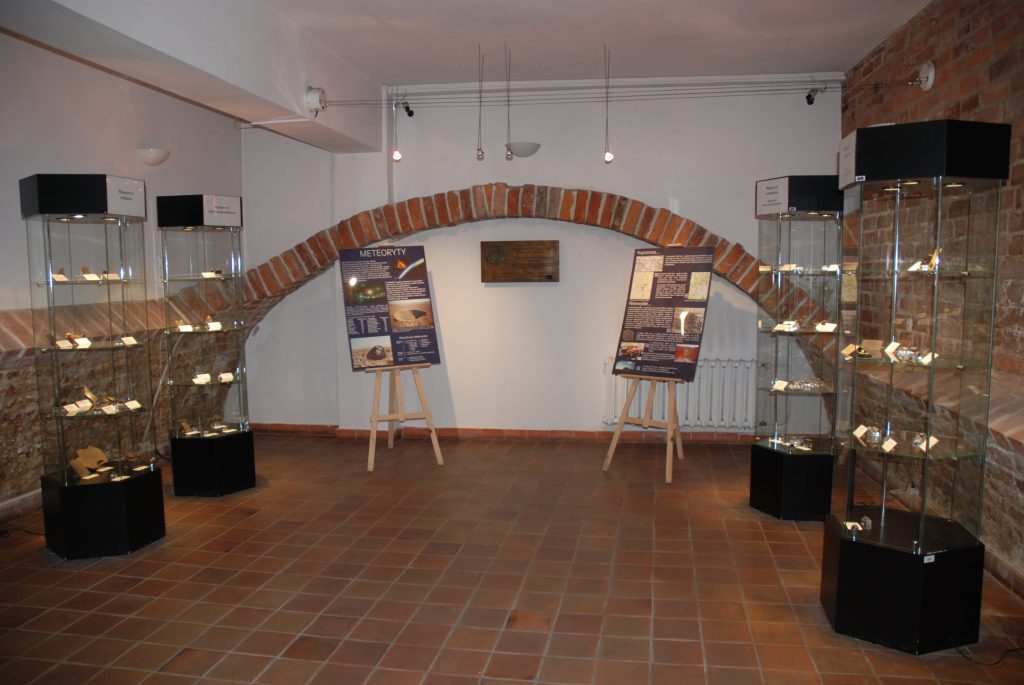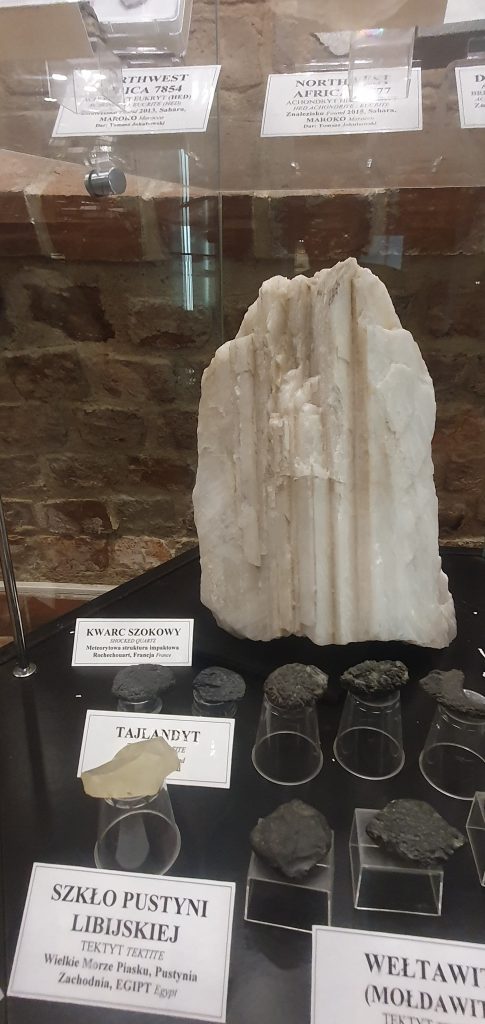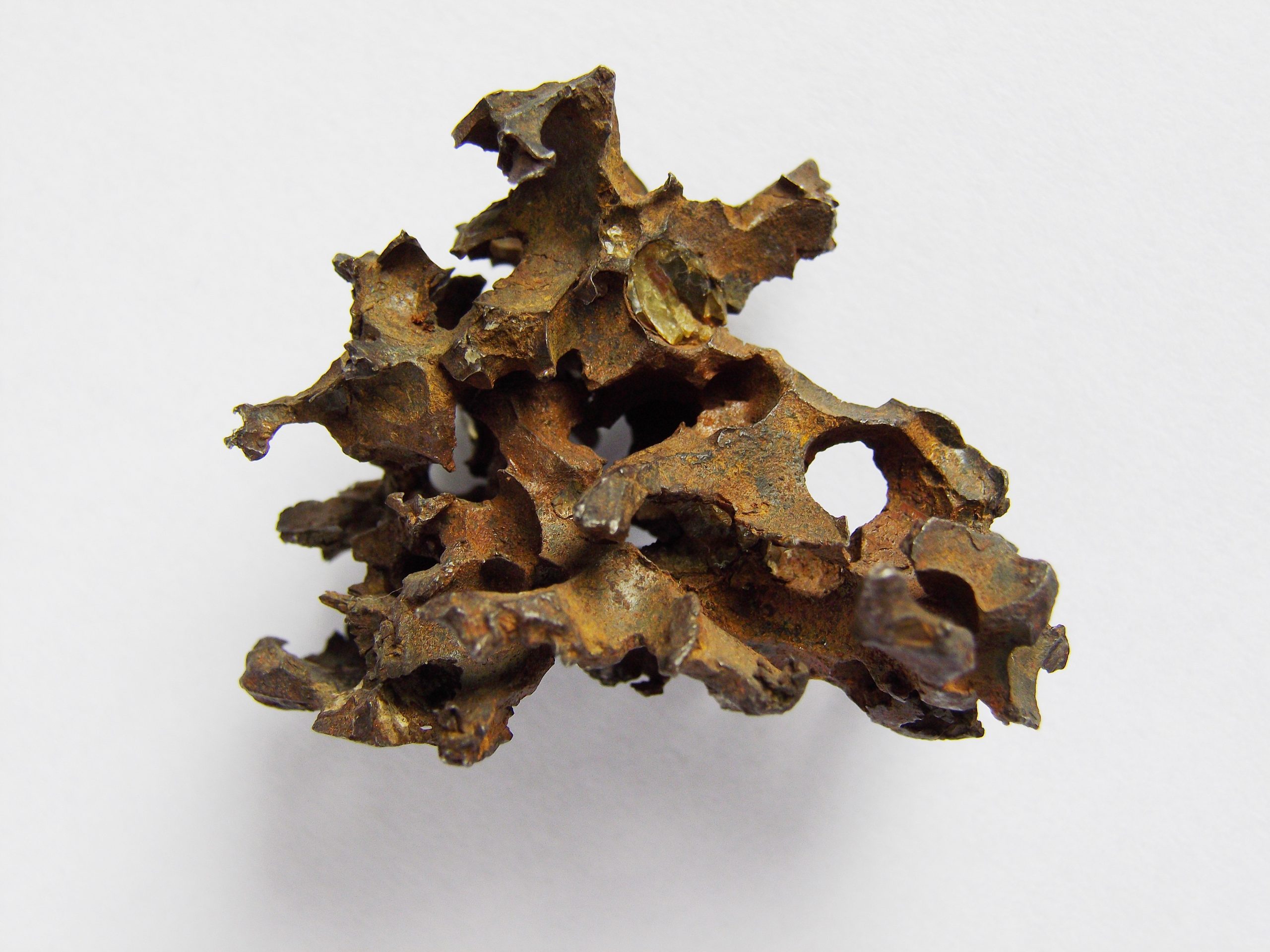
Meteorites
METEORITIES are rocky crumbs of interplanetary matter that have managed to tear through the dense layers of the Earth’s atmosphere and reach the Earth’s surface. Over a day, several hundred million meteoroids (i.e. crumbs of interplanetary matter) fall into our atmosphere at a speed of between 12 and 72 km/s. The vast majority of these, heated by friction, melt (at an altitude of about 100 km) to form a meteor phenomenon, and only a small proportion reach the Earth’s surface as a meteorite.
METEORITE FALLS are typically one-off in nature, but mass falls (so-called meteorite rains) do occur.
Meteorites owe their names to the localities near where they fell or were found. In the latter case, they are meteorites that fell to Earth in the near or distant past, when there were no witnesses to the phenomenon.
METEORITE CRATER is an oval depression or deformation on the surface of the Earth (or another celestial body) caused by the fall of a meteorite. The best-known craters include Canyon Diablo in Arizona, Nordlinger Ries in Germany (the site of tektite-moldavites), and craters in Morasko in Poland.
THE LARGEST METEORITE CRATERS
CRATER
Vredefort
Sudbury
Chicxulub
Woodleigh
Kara
Monicougan
Poppigai
Acraman
Cheseapeake
Puchezh-Katunki
DIAMETER
300
250
180
160
120
100
100
90
85
80
LOCATION
Free State, South Africa
Ontario, Canada
Yucatán, Mexico
Western Australia
Nenetsia, Russia
Quebec, Canada
Siberia, Russia
Southern Australia
Virginia, USA
Novgorod, Russia
AGE (millions of years)
2023
1849
65
364
70
215
36
580
36
167
KRATER Canyon Diablo in Arizona is 1.2 km in diameter and 170 metres deep. It was probably formed 50,000 years ago by the fall of a meteorite 50 metres in diameter.

